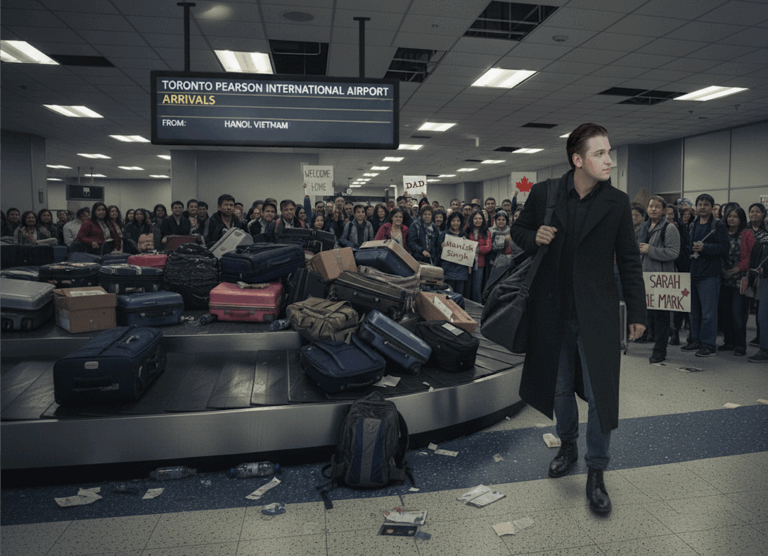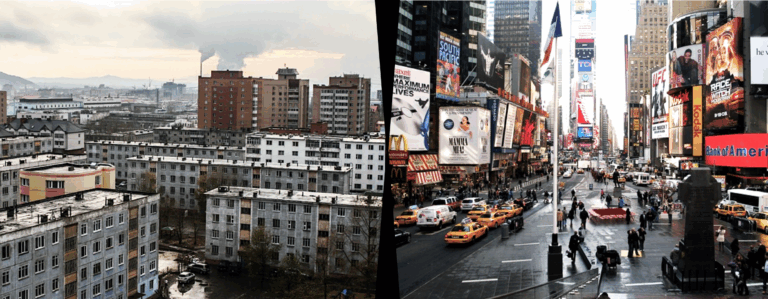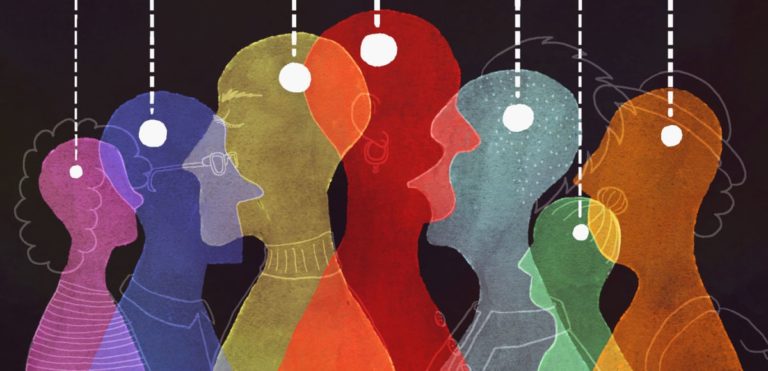“Beauty is in the eye of the beholder,” we are told by fellow citizens who may, when they offer that familiar cliché, be justifying a preference for mud wrestling over Monet. Or they may be academics engaged in the familiar, boring project of deconstructing and subjecting every last bit of beauty to the philosophical equivalent of petri dish analysis.
The aphorism contains a kernel of truth. After all, a hideous child may indeed be beautiful in the eyes of his mother though likely not to anyone else. But maternal exceptions aside, the reality is that plenty of moderns offer the excuse of beauty as relative because the notion that a painting, picture or sculpture could be objectively assessed is thought a hangover of some past age, usually religious. So the possibility of objectively beautiful art is dismissed much in the same manner as is any notion of objective morality.
The English philosopher Roger Scruton dissents and takes on this laissez-faire approach—essentially a democratizing dumbed-down approach—in his new book, Beauty. In a slim, small volume that spans natural, artistic, everyday and human beauty, Scruton zeroes in on the question of whether beauty can ever be judged with a standard that comes from anything other than our own personal preference.
To answer that query, Scruton first notes the appeal of beauty as in possession of its own standard goes back to Plato and Plotinus and later became incorporated into Christian theological thinking:
According to this idea beauty is an ultimate value—something that we pursue for its own sake, and the pursuit of which no further reason need be given. Beauty should therefore be compared to truth and goodness, one member of a trio of ultimate values which justify our rational inclinations. Why believe p? Because it is true. Why want x? Because it is good. Why look at y? Because it is beautiful.
Even if one accepts an otherworldly approach, the author reminds us, perhaps especially those with a more classic orientation, that beauty can also possess a subversive nature. Someone charmed by a beautiful myth may be tempted to believe it is true, and this puts truth and beauty at odds with each other. Scruton doesn’t give this following example but it illustrates the point: Much like a man in love with a physically beautiful woman but who possesses a mean disposition, to believe the unspoken myth—outside beauty is alone worth devotion—is an infatuation that will lead to later misery.
Still, if foolishness occasionally results from an overindulgence in the beatification of the personally pretty, the opposite mistake made most often these days is the reverse: not incorporating everyday beauty in our lives. “Much that is said about beauty and its importance in our lives ignores the minimal beauty of an unpretentious street, a nice pair of shoes or a tasteful piece of wrapping paper, as though these things belonged to a different order of value from a church by Bramante or a Shakespeare sonnet.” Scruton points out that while the pursuit of absolute beauty may have its place—think of Michelangelo intent on creating a magnificent work—such pursuits may distract most of us from the more urgent business of getting things right in our everyday existence. “For most of us,” writes Scruton, “it is far more important to achieve order in the things surrounding us, and to ensure that the eyes, the ears and the sense of fittingness are not repeatedly offended.”
The author is on to something and we need look no further than many of the homes and neighbourhoods created post-World War Two in North America, or “urban renewal” projects that occurred in the same time frame. While it is easy to pick on suburbia, not all the criticisms are deserved. Sensible, people-designed suburbs—and it is people who of course live in the suburbs—allow for the main details of a house to be prominent, rather than the storage box for the car (otherwise known as a garage). Place the garage front and centre, and there is no proper sense of “fittingess” achieved; there are only monotonous repetitions of what some call “snout” houses and what I label “pregnant” houses—where the garage sticks out from the home itself. The main features of the house such as the entrance and windows are thus relegated to a sideshow now shunted off to the literal side. In that design, so much for symmetry, order and beauty. Only an aesthetic dullard would fail to be offended and notice the lack of a sense of “fittingness” in such houses.
But if architectural beauty is rarely pondered these days, or when thought about anyway sacrificed to immediate usage (it’s easier to park one’s car in a snout home as opposed to placing a garage in the back), it is because beauty in general is under attack from at least two directions.
First, as Scruton writes, “many people seem to live in an aesthetic vacuum, filling their days with utilitarian calculations, and with no sense that they are missing out on the higher life.” That’s in part due to perhaps a lack of awareness of the importance of beauty to our lives; it’s also the result of our scientific bent. “Scientists appreciate the intricacies of the natural world. But science is not sufficient—nor is it necessary—to generate the moments of transfiguration,” writes the author in a discussion of how natural beauty affects us.
That’s one side. The other, second reason for the decline of beauty comes from those who, whether in art, architecture or in the universities, reject beauty as an illusion. They instead assert “the old invocations of home, peace, love and contentment are lies, and that art must henceforth devote itself to the real and unpleasant truth of our condition.” But such “realism” is incomplete, and ugly. It leads to a world of replica Brillo boxes, signed urinals, crucifixes in urine—just three examples given by Scruton as examples of the tendency as of late to treat art as a joke or as a narcissistic “look at me” phenomenon.
It is not that art must be nothing but flowers and pastels, the fake Thomas Kincaid approach to still and home life. That’s an overdone idealization of beauty infused with enough saccharin to make one sick. Scruton doesn’t assert that art must be all sweetness and light, only that the prevalent tendency to downgrade beauty is its own flight from reality. In short, he argues, the portrayal of reality is not at all incompatible with beauty:
Look at any picture of the great landscape painters—Poussin, Guardì, Turner, Corot, Cézanne—and you will see that idea of beauty celebrated and fixed in those images. Those painters do not turn a blind eye to suffering, or to the vastness and threateningness of the universe of which we occupy a small corner. Far from it. Landscape painters show us death and decay and the very heart of things: the walls of their houses are patched and crumbling like the stucco of the villages of Guardì. But their images point to the joy that lies incipient in decay, and to the eternal that is implied in the transient.
Thus, we need transfiguration, which comes from art and is both honest and a reminder there is more to us and the world than the merely rational, the merely obvious, and in the worst-case scenarios, more than even the ugliness that human can and do create for themselves and others. Beauty is as necessary as truth.
In fact, we need such transfiguration, such a possibility for beauty, precisely because the world is not always kind. The horrific matter of slavery, forced prostitution and the commodification of human beings dealt with at length elsewhere in this issue are a case in point. Without more to life than the obvious ugliness—and without taking away from the need to deal with such matters straightforwardly as a matter of morality and decency—human beings need an occasional escape from ugliness lest it be assumed to be all there is which would then allow darkness to cover the whole earth.
There is, I think it fair to assert on behalf of Scruton’s approach, a reality even beyond such evil and such tragedy. Whether it is the appreciation of the perfect form of a wildflower or the blended feathers of a bird, Scruton argues these experiences give us an enhanced sense of belonging: “A world that makes room for such things makes room for you.” In other words, somehow we get that even though life isn’t perfect, beauty can on occasion be found and that “something” draws us in.
Scruton’s work is not, the reader should be warned, an initially easy read. Early on, he delves into obscure debates over art and philosophy, necessary perhaps for the philosopher and as a base for his later arguments and observations, but numbing to a reader who might pick up Beauty for a summer beach read. And on the question of an objective standard for beauty, one might make it to the end of the book and still be confused about the threads of arguments surrounding that question. However, for the reader who can stick with it, the later chapters finally flower into more accessible observations.
The voyage is worth the price of admission, especially when Scruton gets into the difference between the type of art that draws us in and makes us feel that our existence is not a fraud, versus the ugly-for-reality’s-sake-art on display on more than a few museum walls, and which non-propagandized patrons rightly reject as a grand fraud. Scruton observes the distinction between art that draws and that which repels is akin to that between a love that venerates (at the heart of tasteful art) and scorn that desecrates. In the latter category is pornography and the profane, and the difference between the two types of art is also akin to the difference between taste and addiction:
Lovers of beauty direct their attention outwards, in search of meaning that brings sense to their lives…addiction, as the psychologists point out, is a function of easy rewards. The addict who presses again and again on the pleasure switch, whose pleasures bypass thought and judgment to settle in the realm of need.
But as Scruton informs us, art, properly understood, is at war with “effect addiction” as he calls it, “where the need for stimulation and routinized excitement has blocked the path to beauty by putting acts of desecration at centre stage.”
It’s a useful insight. Expressed another way, such “effect addiction”—such “art” if one insists on calling it such—is the art of the narcissist. And it explains why in a world that too often worships self, the art produced by that world is anything but sublime.






